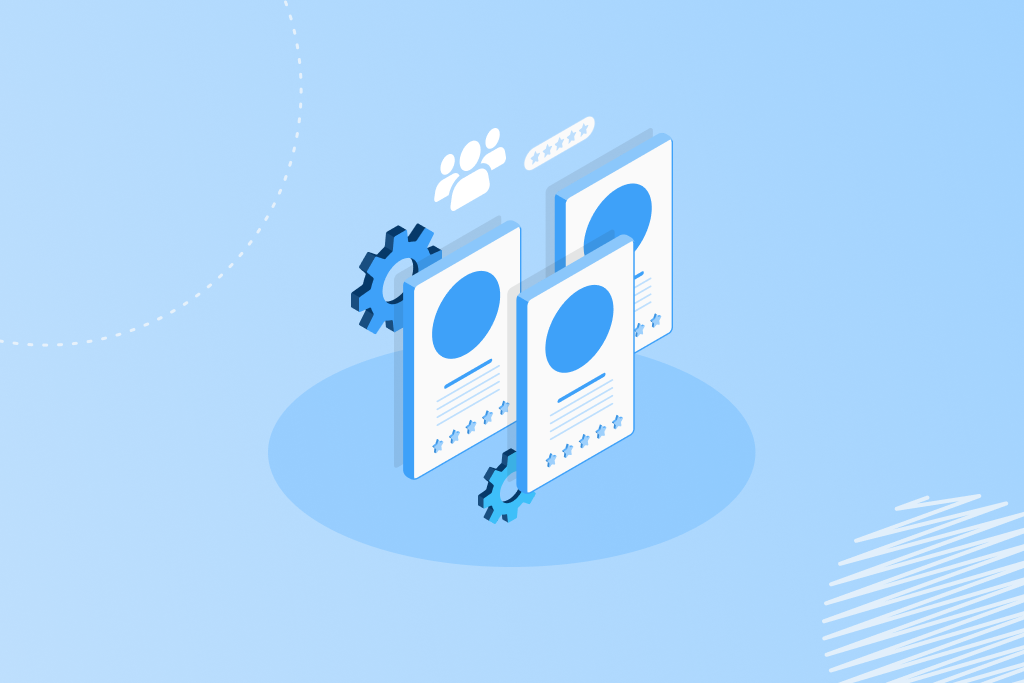Companies are hiring like crazy right now, well, trying to at least. That’s why strategic onboarding has become a key priority for many organizations. Although the numbers and sources vary, it’s said that the average cost to onboard a new employee is around $4000. Multiply that by dozens or even hundreds of new employees each year and you’re looking at a considerable investment in talent.
That’s why it’s a smart move for companies to plan and invest in a quality onboarding experience. Research shows that employees who have gone through a thorough and thoughtful onboarding process are more engaged, more knowledgeable, and much less likely to leave.
What is Employee Onboarding?
Employee onboarding is the process of hiring a new employee into your organization. It can sometimes be confused with employee orientation, but the two are definitely not the same.
Onboarding typically starts at the job offer and extends through training and the time it takes for a new employee to fully understand and mesh with their role and team. The process includes the initial document signing and required paperwork and moves onto orientation, and meetings with team members, leaders, managers, and colleagues. It’s the time it takes to get set up and comfortable with new software and equipment, organizational tools, and processes. In other words, how long it takes to set someone up for success within your company. The more comfortable and knowledgeable they feel, the more confident they’ll be in their role.
How investing in employee onboarding pays off
The organizational impacts of a great onboarding program can last throughout your employee’s tenure.
Here are six reasons why you should invest in the process:
Increased retention and productivity
According to research by Brandon Hall Group, a strong employee onboarding experience can improve new hire retention by 82 percent and productivity by over 70 percent. In a job market where finding the right talent has become increasingly more difficult, it’s important for organizations to recognize the need for great engagement right from the start.
Reduced turnover
Up to 20% of employee turnover happens in the first 45 days. Turnover is expensive and time consuming, and once you factor in the costs of recruitment, training, and compensation, the numbers add up quickly. For organizations looking to avoid these kinds of losses, a good onboarding process will help to alleviate doubts, inspire professional development, and give new hires a sense of connection and belonging.
Clearer communication
A thorough onboarding process keeps everyone on the same page, from the hiring manager to the team and the new employee. By staying in frequent contact with new hires for the first 90 days of their employment, teams and managers can help new employees to get the lay of the land, clarify job expectations, and elaborate on big-picture goals. The faster a new hire feels prepared for their job, the faster they will be able to contribute to the company’s mission.
Lower admin costs
Walking a new employee through direct deposit info, contracts, TD1s, and their profile information takes up a lot of your HR team’s time. One way organizations can improve their onboarding process for both administrators and new hires is to work with an HRIS provider that offers a streamlined onboarding process.
From start to sign off, you can get new hires up and running faster and more efficiently by empowering them with digital document signing, self-serve profile forms, and digital onboarding manuals – all from home and before their first day on the job.
By creating a consistent and repeatable onboarding process, you can avoid the laundry list of tasks that can be easily and efficiently completed by technology. Streamlined onboarding helps to reduce tasks and ensure necessary steps aren’t overlooked.
Positive energy and engagement
Feeling welcome and accepted within your new organization is essential to employee engagement and onboarding helps to provide that. A tour of the building and introductions to countless strangers doesn’t cut it. Employees are looking for something to get excited about. It’s up to you to ensure the onboarding process is engaging and that the new employee has an opportunity to ask questions and be involved in real conversations.
According to Gallup, “70% of employees who had exceptional onboarding experiences say they have "the best possible job." These employees are also 2.6 times as likely to be extremely satisfied with their workplace -- and consequently, far more likely to stay. Simply put, to get exceptional employee outcomes, you need exceptional onboarding.”
Improved employer branding
When it comes to attracting talent, a strong employer brand is key to finding and engaging the right candidates. With the rise of review sites like Glassdoor, you want to ensure your employees feel like they are in the right place. An all-encompassing onboarding program will do just that, helping new and loyal employees feel valued, long after the onboarding process ends.
In summary
The benefits of strategic onboarding far outweigh the costs. In today’s competitive job market, an impactful onboarding process is key to finding and retaining top talent. By starting off on the right foot with new hires your organization will benefit from an increase in employee knowledge and engagement and a decrease in turnover costs.
Additional reading:
Manage entire employee lifecycles with one single system
Avanti’s People Management module helps you easily manage the employee lifecycle – from onboarding, and profile setup to milestone tracking. Our integrated platform brings your team together, increases efficiency, and improves organizational processes.

Manage entire employee lifecycles with one single system
Avanti’s People Management module helps you easily manage the employee lifecycle – from onboarding, and profile setup to milestone tracking. Our integrated platform brings your team together, increases efficiency, and improves organizational processes.






.png)